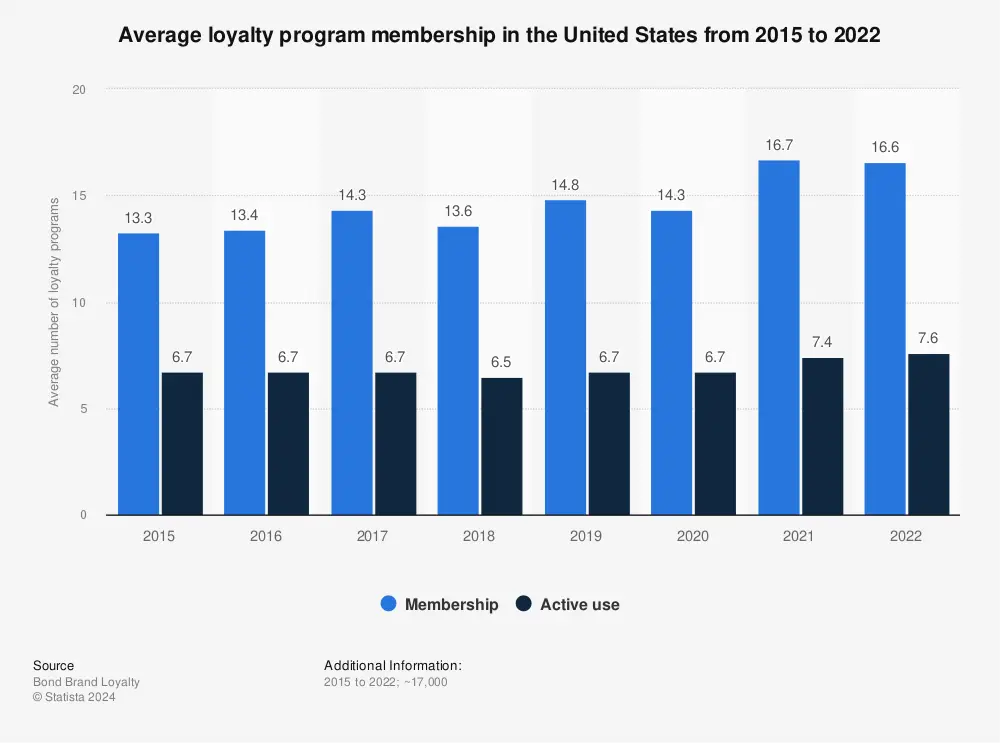Retail Loyalty Programs: Exploring the True Value to Business Owners
Retail loyalty programs, as strategic marketing initiatives, are meticulously crafted to motivate customers to continue their patronage of a business’s products or services. This article aims to demystify loyalty programs, elaborating on their types, benefits, drawbacks, and the overall return on investment (ROI) they offer.
Loyalty programs, by design, offer a multitude of benefits to customers, incentivizing repeated engagement and increasing brand affinity. However, the actual customer usage of these programs varies significantly based on several factors, including the type of program, the perceived value of rewards, and the simplicity of earning and redeeming these rewards.
What Makes an Effective Loyalty Program?
Studies indicate that while a majority of consumers are enrolled in at least one loyalty program, the degree of active participation can differ. A critical element that determines this participation is the ease with which points or rewards can be accumulated and used. For instance, in a points-based loyalty program, customers are more likely to actively participate if the points are easy to earn and redeem without complex conditions or long waiting periods. If the process is too cumbersome or the rewards too distant, customers might not consider the program worth their effort.

Source: Statista
Additionally, the relevance of rewards plays a significant role in customer usage. Programs that offer personalized rewards, aligning closely with customer preferences and purchasing habits, see higher engagement levels. For example, a customer who frequently purchases skincare products would find more value in a loyalty program that offers discounts or special access to new skincare launches rather than one that focuses on unrelated product categories.
Furthermore, communication is key to maximizing customer engagement in loyalty programs. Regular updates about point balances, upcoming rewards, and special members-only promotions keep the program top of mind for consumers. Effective communication strategies ensure that customers are aware of their benefits and understand how to utilize them, thereby enhancing the perceived value of the program.
In summary, the actual usage of loyalty programs by customers hinges on the program’s ability to deliver tangible, easily accessible benefits that are closely aligned with their interests and needs. Retailers that manage to design loyalty programs with these elements can expect higher levels of customer activity and engagement, ultimately leading to increased customer loyalty and repeated business.
Defining Loyalty Programs
Loyalty programs are designed to offer rewards, perks, and other incentives to frequent customers, thus encouraging ongoing business engagement. These programs are not just promotional tactics; they are integral to a long-term business strategy aimed at increasing customer lifetime value and enhancing brand loyalty.
The Three Most Popular Types of Loyalty Programs
1. Points-Based Loyalty Programs
- Detailed Explanation: Customers accumulate points that correspond to the dollar amount spent. These points can be exchanged for discounts, products, or other rewards.
- Example: A coffee shop offering a free beverage for every ten purchases made.
2. Tiered Loyalty Programs
- Detailed Explanation: Customers achieve different levels of loyalty (e.g., silver, gold, platinum) based on their spending or engagement, with each tier offering incrementally better rewards.
- Example: An airline offering tiered statuses with each having its own set of privileges like free upgrades, priority boarding, etc.
3. Paid Loyalty Programs
- Detailed Explanation: Also known as premium loyalty programs where customers pay a fee to join and in return, receive substantial benefits that are available immediately upon membership.
- Example: A retailer offering special discounts and free shipping for all orders as part of a yearly subscription fee.
Comparing and Contrasting Different Approaches
Detailed analysis of how these programs stack against each other in terms of:
- Customer Appeal
- Complexity in Management
- Scalability
Pros and Cons of Each Loyalty Program Type
Points-Based Loyalty Programs:
- Pros: Simplicity, wide appeal, easy to understand and participate in.
- Cons: Potential devaluation of points, high customer expectation for rewards.
Tiered Loyalty Programs:
- Pros: Encourages more spending to reach higher tiers, can be very engaging.
- Cons: Can be seen as elitist, difficult to reach top tiers for average customers.
Paid Loyalty Programs:
- Pros: Immediate value, high perceived exclusivity, consistent revenue from fees.
- Cons: Higher barrier to entry, potential customer alienation if benefits do not align with cost.
Analyzing the Return on Investment (ROI)
A thorough examination of the ROI of loyalty programs, considering factors such as:
- Initial Setup Costs
- Operational Expenditures
- Customer Acquisition and Retention Metrics
- Incremental Sales Generated
Implementing a Successful Loyalty Program
Steps and strategies for planning, launching, and refining loyalty programs, including technology considerations, partnership potentials, and marketing tactics.
Many businesses turn to third-party services, outsourcing, and software solutions to streamline the creation, management, and enhancement of their loyalty programs. These services offer a range of benefits, from technical support to program analytics, helping businesses focus on their core competencies while optimizing customer loyalty strategies.
1. Loyalty Program Management Platforms
Companies like LoyaltyLion, Smile.io, and Yotpo provide comprehensive platforms that facilitate the development and management of customized loyalty programs. These platforms offer features such as point tracking, reward management, and automated communications, which are essential for maintaining engaging programs. They also integrate seamlessly with popular e-commerce platforms, making them invaluable for online retailers who need to synchronize their loyalty offers with their sales channels.
2. Customer Relationship Management (CRM) Software
CRM systems, such as Salesforce and HubSpot, often come with built-in capabilities to support loyalty programs. These tools help businesses track customer interactions, purchase history, and engagement levels, which are crucial for tailoring loyalty rewards to individual customer preferences. By using CRM software, companies can ensure that their loyalty programs are closely aligned with their overall customer relationship strategies, providing a holistic view of customer behavior and loyalty trends.
3. Outsourcing Loyalty Program Operations
For businesses lacking the internal resources to manage complex loyalty programs, outsourcing to specialized agencies can be a practical solution. These agencies handle everything from program design and technology integration to reward fulfillment and customer service. By partnering with an experienced provider, businesses can benefit from expert insights and proven strategies that drive program success without the need to invest heavily in in-house capabilities.
Third-party services, whether in the form of dedicated software solutions or outsourced management, play a pivotal role in the effective execution of loyalty programs. They provide the necessary technological infrastructure, strategic guidance, and operational support, allowing businesses to launch sophisticated loyalty programs that resonate with their customers and align with their brand values. By leveraging these resources, companies can enhance customer engagement, increase retention, and drive long-term business growth.









